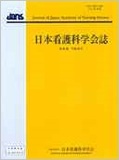Japanese
English
- 販売していません
- Abstract 文献概要
- 参考文献 Reference
要旨
目的:生体高分子の褥瘡創部アセスメントへの活用を目指し,褥瘡の浸出液中のmatrix metalloprotease-9(MMP-9)およびbone morphogenetic protein-6(BMP-6)の検出量と,褥瘡創部のDESIGN-Rの各項目の評価との関連を明らかにする.
方法:褥瘡創面から非侵襲的に採取した,創傷液内MMP-9とBMP-6のタンパク質検出量とDESIGN-Rの各項目の評価得点間の相関および,差について検討した.
結果:MMP-9の量と創底の深さ,滲出液,肉芽組織の項目,BMP-6の量と創縁のポケットの項目で相関を認め,重症度別比較では,創底部の深さの項目及び創縁部のポケットの項目はそれぞれの生体分子の検出量による軽度・重度の判断が可能であることが示唆された.
結論:MMP-9およびBMP-6は褥瘡創部の状態を客観的に判断するために有効な高分子マーカーであり,DESIGN-Rの評価および重症度を客観的にアセスメントするツールとしても活用が可能である.
Purpose: We investigated whether matrix metalloprotease-9 (MMP-9) and bone morphogenetic protein-6 (BMP-6) of biopolymers can be used to assess pressure ulcers. We examined whether the quantity of both proteins in the ulcer exudate was associated with the DESIGN-R scores for the pressure ulcers.
Methods: The concentrations of MMP-9 and BMP-6 in the exudate from pressure ulcers were measured. DESIGN-R scores were determined for the pressure ulcers. The associations between the biological markers (MMP-9 and BMP-6) and the DESIGN-R scores were calculated. Based on the DESIGN-R scores, the differences in the concentration of both proteins measured were also evaluated.
Results: The concentration of MMP-9 was greater in the exudates from pressure ulcers with higher scores for D (depth), E (exudate), and G (granulation tissue) in the wound bed. BMP-6 in the pressure ulcer exudate correlated with higher scores for P (pocket, undermining formation) in the wound edge. Furthermore, it was suggested that by estimating concentrations of MMP-9 and BMP-6, a judgment of severity was possible individually based on the exudate from the depth (D) of the wound bed and pocket (P) of the wound edge.
Conclusion: The amounts of MMP-9 and BMP-6 in the wound exudates could be utilized as biological markers for the assessment of pressure ulcers.
Copyright © 2016, Japan Academy of Nursing Science. All rights reserved.


